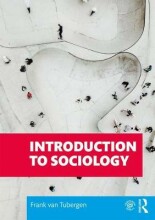Summary: Evidence Based Hrm, What (Do) We Know About People In Workplaces | 9789462406247 | Brigitte Kroon
- This + 400k other summaries
- A unique study and practice tool
- Never study anything twice again
- Get the grades you hope for
- 100% sure, 100% understanding
Read the summary and the most important questions on Evidence based HRM, What (do) we know about people in workplaces | 9789462406247 | Brigitte Kroon
-
1 Evidence based HRM
-
1.1 Introduction
This is a preview. There are 1 more flashcards available for chapter 1.1
Show more cards here -
What are employment relationships?
The exchange relationships of reciprocal nature between those performing the work (employees) and those who offer it (employers) in the aim of realizing organizational goals. -
HRM (Human resource management)
This is the sum of all strategy, policy, procedures and day to day acts that aim to guide employment relations in organizations towards the goals of the organization, while ensuring alignment with contextual conditions (organization characteristics, competition, labour markets) -
What is needed for employment relations to begin?
Employment relationships commence after negotiated exchange involving employment contracts and social-relational agreements. -
What is a factor of great importance for organizations to realize their goals?
The performance and effort of people, employees, can lead to the achievement of organizational goals. -
1.3 The origins of evidence-based management
This is a preview. There are 1 more flashcards available for chapter 1.3
Show more cards here -
Which event in history, around the 19th century, has had an impact on employment relationships?
Industrialization , factory workers had bad working conditions due to theprofit-based mindset ofemployers . Eventually, workers came together in unions and began to strike. Managers met demands -> employment (industrial) relations. -
What research for the 20th century is Mayo known for?
The Hawthorne studies, suggesting that social psychological effects (more attention for workers) are stronger than work design effects or economic incentives. This is the basis for HRM. -
How would you describe the relationship between personnel satisfaction and organizational performance?
There can be seen a positive correlation:
Employee satisfaction -> better employee performance -> better organizational performance -
What did Hoselid teach us in 1995 obout HRM?
"Organizations that use more HRM bhest practices perform better financially" More HRM = 20% more value. -
What are human resource practices?
All policies and procedures used to manage employment relations. It is more than a written policy. Managers and employees initiate, use and change HR practices. HR practices aim to improve certain things. -
Why are the Google offices a good strategy?
The layout of the offices is backed up by science, it is a human resource practice aimed at stimulation creativity, innovation and recruitment
- Higher grades + faster learning
- Never study anything twice
- 100% sure, 100% understanding
Topics related to Summary: Evidence Based Hrm, What (Do) We Know About People In Workplaces
-
Evidence based HRM - Decision-making as bounded rationality
-
Evidence based HRM - The evidence-based HRM proces
-
Investing in people and business performance - Introduction
-
Investing in people and business performance - Theory
-
Investing in people and business performance - Resource-based theories
-
Investing in people and business performance - Human capital theories
-
Investing in people and business performance - Social capital theory
-
Investing in people and business performance - Social exchange theory
-
Knowledge management - Individual level knowledge
-
Knowledge management - Knowledge storage, retrieval and use
-
Knowledge management - HR practice
-
Performance under conditions of change - Introduction
-
Performance under conditions of change - Dynamic capabilities
-
Performance under conditions of change - Capabilities for dynamic careers
-
Performance under conditions of change - HR practice
































